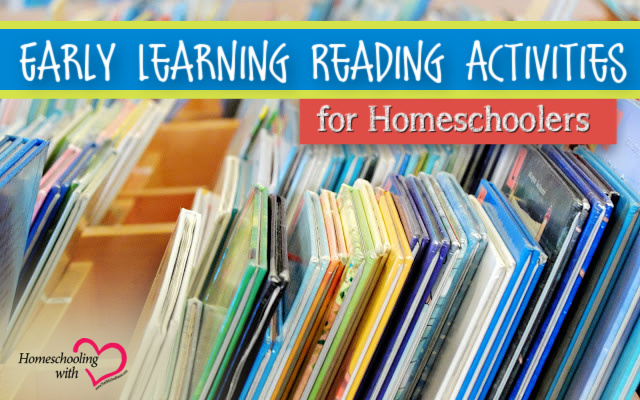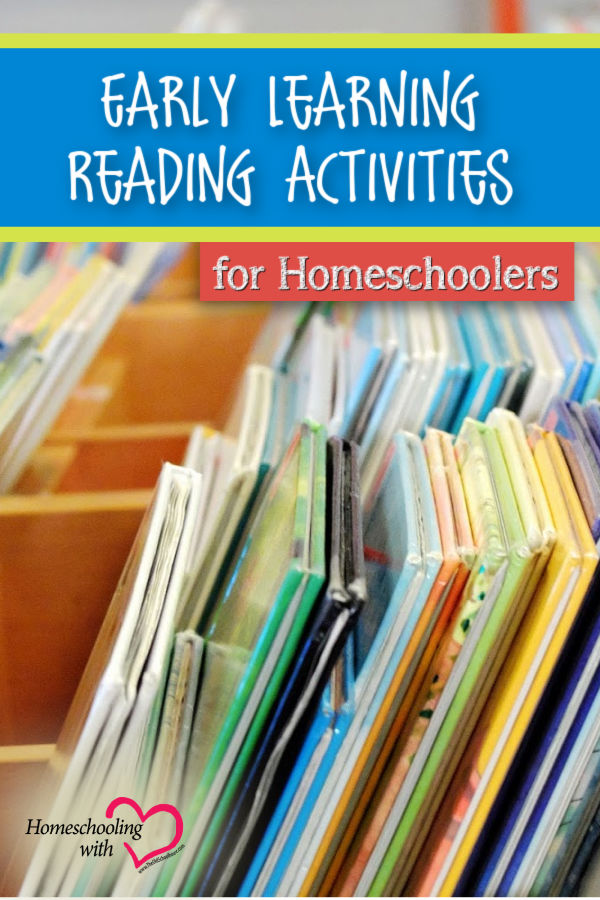Early Learning Reading Activities for Homeschoolers


Families seeking home-based early learning reading activities for their children need not look far. With a plethora of resources found online, at local libraries, and discount stores, parents will be well on their way to teaching their child to read or strengthening current readers’ reading skills with these simple steps.
First, begin with a quality phonics program. Once your child understands basic phonics, they will have a whole new world opened up to them. Many adults who were taught how to sightread struggle with reading words that are unfamiliar to them well into adulthood if they haven’t gone back and taught themselves basic phonics. Phonics is surprisingly not taught in all public schools but produces effective results so children can become lifelong self-taught learners.
If your child learns best with hands-on activities, you can find a wide variety of materials to use around your home or at discount stores. For children who are learning how to master their alphabet, gather together foam letters, magnetic letters, and wooden letters. Keep them in bins or drawers out of your child’s reach and bring them out on special occasions when you and your child have the time to sit down and work on letter learning. If you are brave, consider creating a bin of rice or sand where your child can create letters in, under your supervision, of course.
Second, focus on rhyming. It’s tempting to disregard children’s rhymes, poems, and stories and cast them off to the wayside because they are seemingly pointless and goofy. Yet, studies show that children who memorize nursery rhymes when they are young become strong readers. In addition to memorizing nursery rhymes, spend some time reading fun rhyming books to your child.
Alexander and the Terrible, Horrible, No Good, Very Bad Day by Judith Viorst
Brown Bear, Brown Bear, What Do You See? by Bill Martin, Jr.
Horton Hatches the Egg by Dr. Seuss
The Little Engine That Could by Watty Piper
Encourage repetition and the reading of favorite books and poems that your child has memorized
Third, place reading in motion. Get your children up out of their seats and encourage them to act out the stories they have just read. Have a day where they can dress up as their favorite character from a book. Either while you are reading to them or once you have completed the story, encourage them to draw or paint their favorite scenes.
Fourth, create scrapbooks as you read together. For early readers, cut out pictures from magazines and paste in a notebook to match the letter of the week that you may be working on. Older elementary students can find pictures in magazines to recreate their favorite story.
Finally, encourage family reading time. Set aside time for the young reader to read to siblings, parents, grandparents, or friends. Another fun idea is to have a poetry tea time as a family.
Remember to be a good role model to your children when it comes to reading. Do they see a book in your hands in your spare time? When you want to look up a recipe, do you look at a cookbook or hop online? Though there certainly is a time and a place for online research and usage, we also need to remember that if we want our children to become good readers, we need to show them the power reading has by implementing it in our own lives. That may sound silly, but sometimes we have to actively pursue opportunities to show our children the value that a good book possesses. This can happen by reading on our own, reading aloud to them, or by simply having plenty of books available in the home.
Are you concerned about finding the right material for your child to read? Material that will be on their level, not too easy, and certainly not so hard that they can’t make it through a single chapter? Use the five finger rule to find the perfect fit for your kids. Simply find a page of the book that you are considering and have them raise a finger on one hand when they come to a word that they do not know. If they reach five fingers while on a single page, then the book is too hard for them and you will need to find one a tad bit easier.
Teaching your child does not need to be daunting. By using these simple steps and by being gracious with yourself and your child, you will be able to encourage and strengthen your child’s reading skills in no time!














































Thank you! This is interesting!
When my youngest was learning to read, I used to put up stickers with letters and words all over the house. And he read them when he found them. It was our game: the more he finds the stickers and reads them correctly (make sentences or words out of them), he gets an award – a jelly or a delicious drink.
Now he reads with confidence and has interesting and favorite books. And we are now practicing exactly the speed of reading.